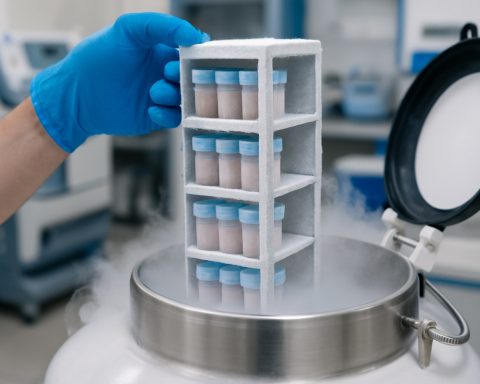- Don Pettit, a renowned NASA astronaut, concludes his latest 220-day mission aboard the International Space Station (ISS), preparing to return to Earth alongside Russian cosmonauts Alexey Ovchinin and Ivan Vagner.
- Pettit’s career, grounded in a background in chemical engineering, is marked by a lifelong pursuit of scientific exploration and unraveling cosmic mysteries.
- The mission, part of the preparatory work for deep space exploration, began in September 2024 from Baikonur Cosmodrome, aiding critical research efforts.
- Pettit and his team attended to many experiments, contributing to our understanding of microgravity and space travel.
- The crew’s return on April 19 involves a precision landing in Kazakhstan, broadcasted live by NASA on NASA+.
- The ISS continues its journey with Expedition 73, as new astronauts Jonny Kim, Sergey Ryzhikov, and Alexey Zubritsky prepare for their mission.
- SpaceX Crew-10 will soon join the ISS, continuing the relentless pursuit of knowledge and exploration.
Amidst the endless void, where Earth is but a shimmering jewel, astronaut Don Pettit has carved out his own legacy in the realm of the stars. After spending a staggering 220 days aboard the International Space Station (ISS), Pettit is about to re-enter the familiar embrace of Earth’s gravity, departing alongside Russian cosmonauts Alexey Ovchinin and Ivan Vagner in the same Soyuz capsule that originally ferried them to this floating marvel of human ingenuity.
Pettit, who hails from the lush landscapes of Oregon, is a pioneer of the final frontier. His illustrious career with NASA spans decades, and this latest journey is just one chapter in a narrative defined by curiosity and scientific endeavor. With a doctorate in chemical engineering, Pettit first burst onto the space scene in 2003, and ever since, he has made it his mission to unravel the mysteries of the cosmos during his multiple stints aboard the ISS.
This latest adventure began on a crisp day in September 2024—the culmination of years of preparation and dedication. Blasting off from the historic Baikonur Cosmodrome in Kazakhstan, Pettit, Ovchinin, and Vagner embarked on a voyage that would support critical research laying the groundwork for future deep space exploration.
Tasked with both scientific discovery and station upkeep, Pettit navigated daily life in microgravity with grace and innovation. The experiment-choked airlock became his laboratory, where every task brought humanity one step closer to Mars and beyond. Simultaneously, he was amidst the bustling orchestration of personnel, wherein his presence often overlapped with other daring astronauts, including Butch Wilmore and Suni Williams, who extended their mission due to technical setbacks.
But all journeys must end, and Pettit is scheduled to undock from the Rassvet module at precisely 5:57 p.m. ET on April 19. Their descent back to Earth will be a ballet of engineering precision, with a parachute-assisted landing expected in Kazakhstan’s remote steppe at 9:20 p.m.
NASA, fulfilling its role as a gatekeeper of cosmic tales, will broadcast every heartbeat of this return on NASA+, beginning from 2 p.m. ET. The day before their descent, a solemn change of command ceremony will mark the passing of the torch to the new occupants of the ISS, silently signaling the eternal rotation of mission upon mission.
Pettit’s footsteps will soon grace Earth’s soil again. In the days following their landing, he and his comrades will make their way back to civilization. Pettit will jet off to Houston, while Ovchinin and Vagner resume their sojourn in Star City, Russia.
As one voyage ends, another begins. The ISS will soon be home to the zealous efforts of Expedition 73. Fresh-faced Jonny Kim and his companions, Sergey Ryzhikov and Alexey Zubritsky, stand ready to write the next chapter.
The wheel of exploration turns relentlessly. A new crew, spearheaded by the likes of the internationally assembled SpaceX Crew-10 mission, will join the orbiting home to continue the quest for knowledge. Each rotation brings us closer to new frontiers. That is humanity’s journey, and it is astronauts like Don Pettit who, through their dedication, bridge the chasm between Earthly shackles and the infinite beyond—a testament to what we can achieve when we reach for the stars.
The Untold Stories of Astronaut Don Pettit’s Return from the Cosmos
The Legacy of Don Pettit: An Astronaut’s Impact Beyond His Missions
Don Pettit’s journey is a remarkable blend of personal achievement and scientific advancement. His journey into space is riveting, but what about the details that enrich his narrative? Let’s delve deeper into the aspects of his mission and its broader implications for space exploration.
Frequently Asked Questions About Don Pettit’s Mission
1. What scientific contributions did Don Pettit achieve during his ISS mission?
During his 220 days aboard the ISS, Pettit was involved in a variety of experiments that advanced our understanding of microgravity’s effects on humans, materials science, and biological systems. He conducted studies that contribute significantly to NASA’s agenda for deep space exploration, including the physiological adaptations necessary for long-duration missions to Mars and beyond.
2. How does the ISS support deep space exploration?
The ISS functions as a microgravity lab and a testbed for space exploration technologies. It helps scientists and engineers understand the challenges posed by long-term space travel. Additionally, the station’s international collaborations make it a prototype for multi-national missions into deeper space territories.
3. What are the expected outcomes of Pettit’s return to Earth?
Pettit will undergo a series of post-flight physical and psychological evaluations to further study the effects of prolonged microgravity exposure. These assessments are critical for understanding how extended space missions impact human health, which is essential for planning future missions to the Moon, Mars, and potentially beyond.
Real-World Use Cases: Space Research Applications
The research conducted by Pettit and his colleagues plays a pivotal role in resolving Earthly challenges, such as developing advanced materials, improving water purification processes, and furthering medical research related to osteoporosis and muscle atrophy.
Market Forecasts & Industry Trends in Space Exploration
The global space industry is expected to reach over $500 billion by 2030, fueled by increased governmental and private investments. Companies like SpaceX, Blue Origin, and international government agencies are spearheading initiatives that were once the sole domain of organizations like NASA.
Reviews & Comparisons: Space Travel Technologies
Space travel technologies have advanced significantly, from the reliable Soyuz capsule to emerging spacecraft like the Orion spacecraft and SpaceX’s Crew Dragon. The evolution of these technologies allows for more frequent and efficient missions, which are critical as humanity extends its reach further into space.
Pros & Cons Overview of Working on the ISS
Pros:
– Unique environment for scientific research.
– Developments in international collaboration.
– Opportunities for technological advancements.
Cons:
– High risk and physical tolls on astronauts.
– Significant costs and resource investments.
– Limited capacity and need for scheduled maintenance.
Actionable Recommendations
For those interested in keeping track of space missions and technology advancements, regularly check platforms such as Nasa and credible news outlets for the latest updates. Engage with forums and communities focused on space exploration to stay informed and contribute to discussions on future space missions.
Quick Tips for Aspiring Astronauts
1. Education is Key: Focus on STEM (science, technology, engineering, and mathematics) disciplines.
2. Develop a Specialized Skill: Expertise in a specific field can make you a valuable asset to mission teams.
3. Stay Physically Fit: Astronauts undergo rigorous health assessments and physical training.
4. Cultivate a Global Perspective: Space missions often involve international teams, requiring cultural understanding and cooperation skills.
Embracing these insights will not only help you appreciate the work being done in the field of space exploration but may also ignite a passion for a career beyond our planet.







